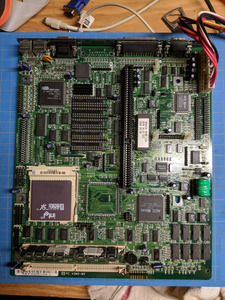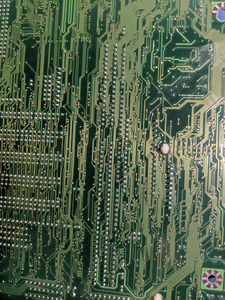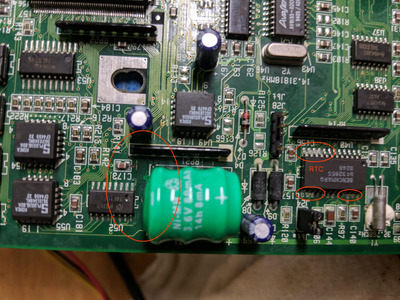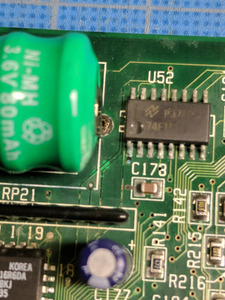First post, by yzbq11c
Hi, new to the board!
I've wound up reading many Vogons threads in trying to bring my childhood 486 back on line but I'm at a point where I could use some new ideas or perspectives.
Short story is that ~9 months ago I pulled my family's old 486 out of the attic and powered it up. It worked perfectly as if no time had passed, very cool.
I took it home and stored it until I had some time to tinker. I recently pulled it and powered it up to be met with a host of issues.
So i stripped it down to just the board, ram, and processor and would receive a 3-long, 2-short beep error code when powering up.
I could see the barrel battery had begun leaking, so in my first attempt w a solder iron, i replaced the battery and cleaned what I could, see the attached photo of the post-cleaned board (i've already been told this job could have been better, so its on the short list of things to revisit)
As i said, the board wouldn't POST and I would run up against the 3-2 beep errors. I couldn't identify the board or the error codes but a common answer was that the memory wasn't mounting. I bought some memory from ebay (128MB (2 X 64MB) EDO MEMORY NON PARITY 60NS SIMM 72 PIN 16X32) and when installed the beeping stopped but I still didn't seem to mount. I would get no video output in this configuration.
Now for the really ugly stuff:
It was recommended I pick up a diagnostic card to better identify the errors. I bought one and it just didn't seem to do anything when inserted into the ISA slot. So, like an ass, I inserted the PCI end of the diagnostic card into the ISA slot and immediately part of the card lit up but also started smoking. I only did this once, but the motherboard now seems in worse shape: Now, even with the memory modules removed I get NO beeping error codes, no video.
I've reinserted several cards, removed the processor, plugged in a bunch of peripherals in an attempt to get something different to happen, but no luck.
Does anyone have suggestions for working through the next part of this? I am by no means an electrical person, and am fumbling through this as a hobbyist trying to get a piece of nostalgia to life.
Any help and suggestions appreciated. Happy holidays!






